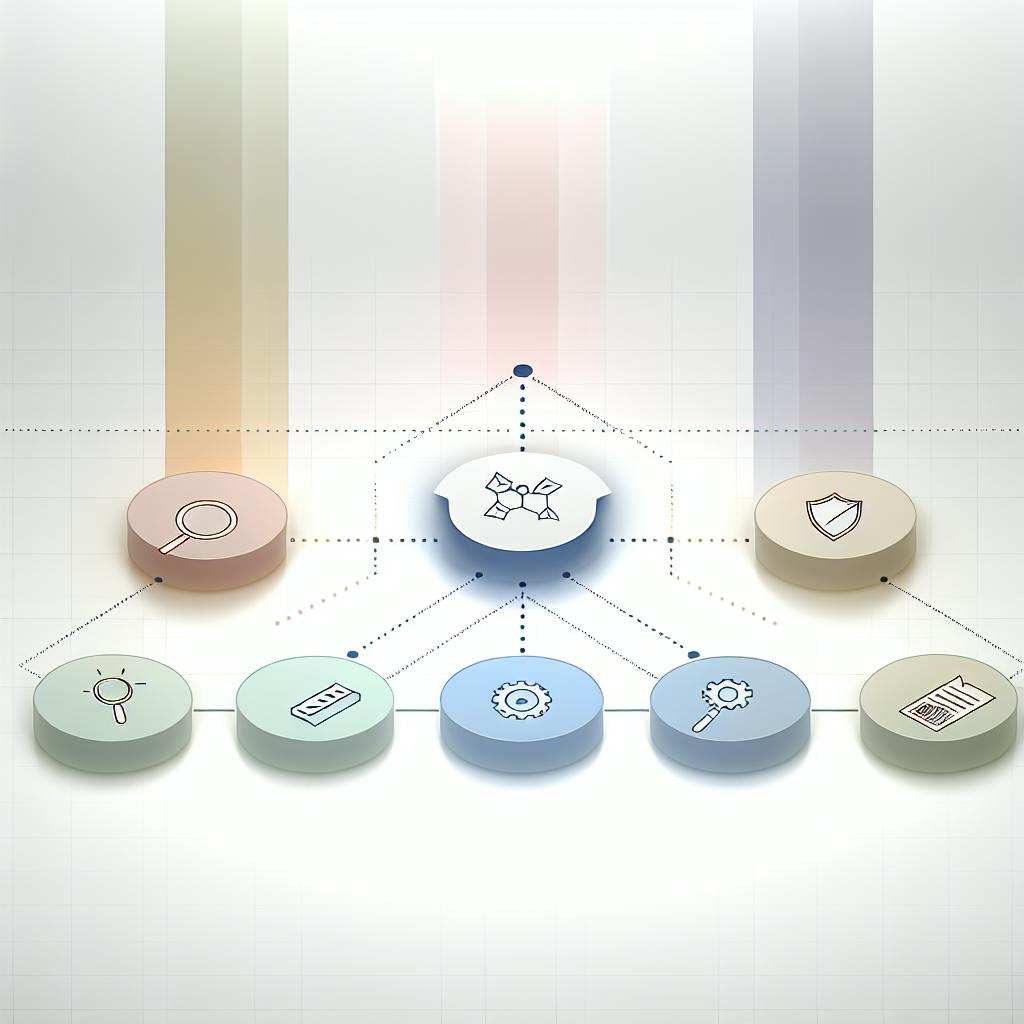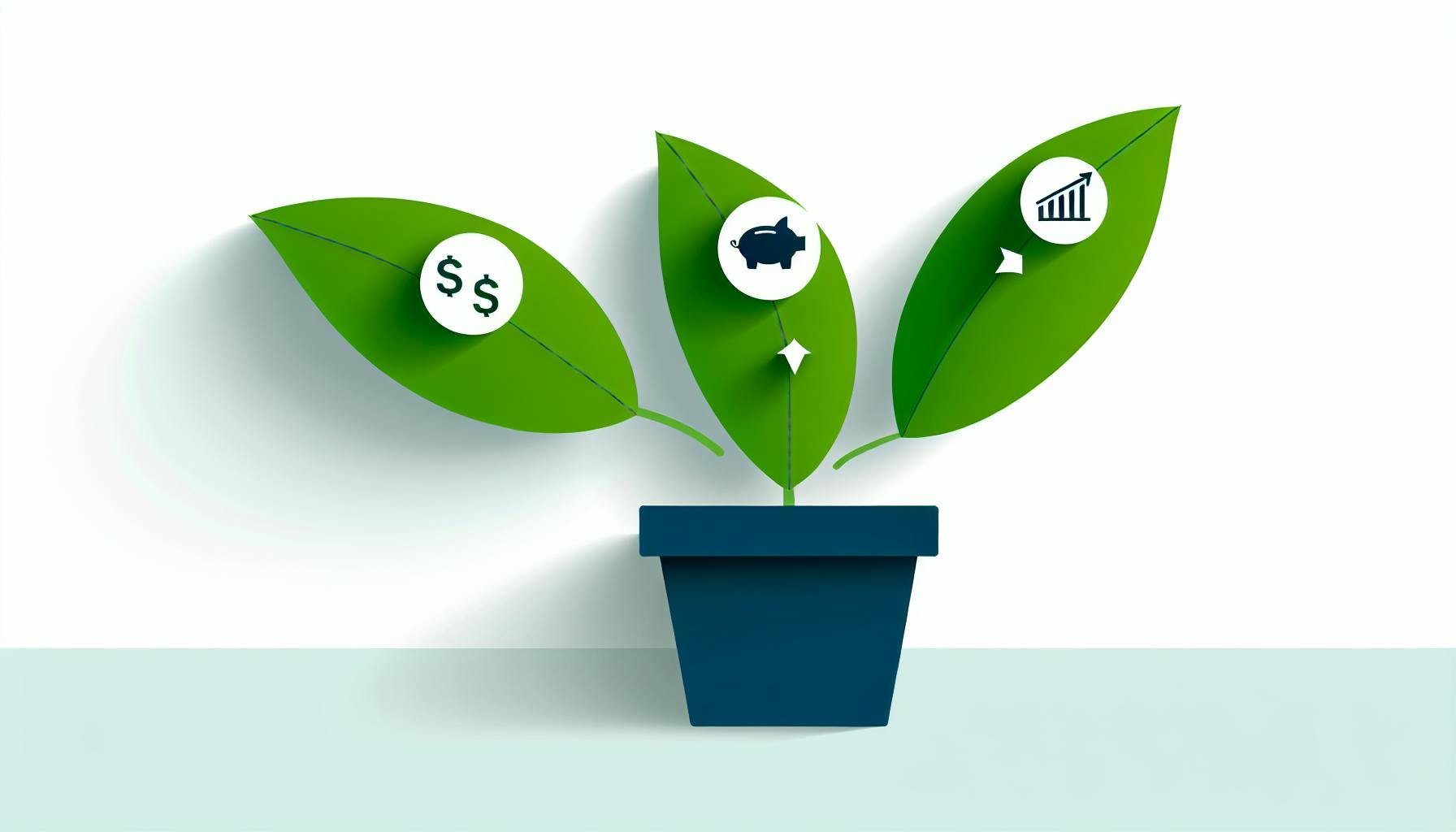Most people would agree that crowdfunding can be confusing, with many different types and platforms to choose from.
In this post, I'll clearly explain the 4 main types of crowdfunding and help you understand the best platform for your needs.
You'll learn the key differences between donation, reward, equity, and peer-to-peer lending models. I'll also compare popular sites like Kickstarter, Indiegogo, GoFundMe, and more. By the end, you'll know exactly which approach is right for your next crowdfunding campaign.
Introduction to Crowdfunding
Crowdfunding refers to the process of raising small amounts of money from a large number of people, typically via the Internet, to fund a new business venture or project. It allows entrepreneurs and startups to tap into a broad base of potential investors and backers to get their ideas off the ground.
Understanding Crowdfunding and Its Significance
Crowdfunding provides an alternative funding avenue for startups and small businesses that may not qualify for traditional financing options like bank loans. It democratizes access to capital by allowing anyone to invest in early-stage companies. Some key points about crowdfunding:
- Enables entrepreneurs to validate and fund new business ideas or projects by raising money from a "crowd" of individuals
- Backers support ideas they find compelling and often get rewards or perks in return
- Operates through online platforms like Kickstarter, Indiegogo, etc. that facilitate transactions
- Opens up early-stage investing to everyday investors outside of typical angel and VC circles
By removing traditional funding barriers, crowdfunding gives more entrepreneurs a chance to bring innovative products or services to market.
The Evolution of Crowdfunding Platforms
While the concept of raising funds from many individuals existed earlier, online crowdfunding really took off in the 2000s with the rise of platforms like:
- Kickstarter (2009) - Rewards-based funding for creative projects
- Indiegogo (2008) - Flexible funding models across categories
- GoFundMe (2010) - Personal cause and charity fundraising
These showed the power of the internet and social media to connect fundraisers with interested donors/investors. The success of platforms like Kickstarter paved the way for equity-based crowdfunding under the JOBS Act, allowing unaccredited investors to fund startups.
Empowering Entrepreneurs: The Crowdfunding Advantage
Key advantages of crowdfunding for entrepreneurs and startups include:
- Access to early stage capital outside of traditional financing
- Validation of product-market fit and demand generation
- Marketing exposure and building an early customer base
- Engaging first backers who become brand evangelists
- Flexibility across funding models from donations to equity
For lean startups, crowdfunding can provide the spark needed to turn ideas into reality and scale up operations.
What are the 4 different types of crowdfunding?
There are four main types of crowdfunding models:
- Donation-based crowdfunding - Backers provide money to causes they want to support, without expecting anything in return. Popular platforms like GoFundMe and Kickstarter enable donation-based campaigns. These work well for nonprofits, charities, or personal causes.
- Rewards-based crowdfunding - Backers receive a "reward" for their contribution, often the product or service being funded once it is developed. Rewards act as pre-orders. Kickstarter pioneered this model. Entrepreneurs use it to validate and fund new products.
- Equity-based crowdfunding - Backers receive equity or stock in exchange for investment, getting a financial return if the company succeeds. EquityNet, SeedInvest, and similar platforms facilitate equity crowdfunding, which helps startups raise early funding and gives backers shared ownership.
- Debt-based crowdfunding - Also called peer-to-peer lending, sites like LendingClub and Prosper allow backers to lend money to receive interest payments over time. Borrowers get funds faster than traditional loans.
The best crowdfunding type depends on campaign goals and incentives. Most entrepreneurs use rewards-based models to fund new products or startups. Nonprofits often benefit from donation-based funding.
Which type of crowdfunding is the best?
Rewards-based crowdfunding is generally considered the most popular and accessible type of crowdfunding for startups and small businesses. Here's a quick overview of some of the main types of crowdfunding and their key features:
- Rewards-based: Backers pledge money and receive non-financial rewards or perks in return, like products, services, or experiences. This is the model used by sites like Kickstarter and Indiegogo.
- Equity-based: Backers receive an ownership stake in your company in exchange for their investment. This helps startups raise funds and gives backers a financial return. Platforms like SeedInvest and EquityNet offer this.
- Donation-based: People simply donate funds to support a cause they care about, nonprofit, or personal need. GoFundMe is the most well-known example. Donors don't receive direct rewards.
- Debt-based: Also called peer-to-peer lending. Borrowers receive loaned funds from peer investors and repay over time with interest. LendingClub and Prosper operate this way.
When weighing the different models, rewards-based crowdfunding tends to be the most beginner-friendly option for early-stage startups and small businesses seeking smaller funding amounts from a wider pool of potential backers. The lack of equity stakes or repayment obligations also makes it lower risk.
However, equity-based crowdfunding can unlock larger investments if you meet eligibility requirements. And peer-to-peer lending offers more flexible terms. So the "best" approach depends on your specific funding needs and company stage. Testing different platforms can help identify which model resonates most with your target audience.
How many types of crowdfunding campaigns are there?
There are four main types of crowdfunding campaigns:
- Donation-based crowdfunding: This is when people donate money to a cause, project, or business they want to support, without expecting anything in return. Popular donation-based crowdfunding platforms include GoFundMe and FundRazr.
- Reward-based crowdfunding: With this model, people donate money in exchange for rewards, perks, or products. For example, someone might donate $100 to receive a copy of an album being recorded. Kickstarter and Indiegogo are examples of reward-based platforms.
- Peer-to-peer lending: This allows businesses to source loans from individual lenders rather than financial institutions. The business sets the loan amount, terms, and interest rate they need. Lenders choose which loans to fund. Examples include Prosper and LendingClub.
- Equity-based crowdfunding: Investors receive an ownership stake in the business in exchange for their investment. Equity crowdfunding helps startups raise funds and gives investors a share of future profits. SeedInvest, EquityNet, and Crowdfunder offer equity crowdfunding.
No matter the specifics of your campaign, set yourself up for the best chance at success by having a strong business plan, building an audience, creating effective project pages, offering fair rewards, and leveraging social media marketing.
Is GoFundMe a type of crowdfunding?
Yes, GoFundMe is considered a type of crowdfunding. Specifically, it falls under the category of donation-based crowdfunding.
Donation-based crowdfunding platforms like GoFundMe allow people to raise money for personal causes or needs, without providing any rewards or equity to donors. Some key things to know:
- GoFundMe campaigns are often set up to help pay for unexpected medical bills, funeral costs, or other challenging life circumstances.
- Donors typically give to GoFundMe campaigns to help out someone they know or feel compassion towards.
- There is no guarantee donors will receive anything in return, besides the satisfaction of helping someone in need.
- GoFundMe takes a percentage of donations as a platform fee. The rest goes to the personal cause.
So in summary, GoFundMe meets the definition of crowdfunding since it pools together small donations from a "crowd" of people via the internet. But it specifically enables personal and social fundraising through donations rather than offering rewards or equity. This makes it a prime example of donation-based crowdfunding.
Other popular examples of donation-based crowdfunding platforms include Fundly, Bonfire, FundRazr, and CrowdRise. These sites work similarly to GoFundMe by allowing people to request donations from friends, family, colleagues or general well-wishers to support personal needs and causes.
sbb-itb-d1a6c90
Exploring the 4 Types of Crowdfunding
Crowdfunding provides an innovative way for entrepreneurs and startups to raise money by reaching out to a large number of people for small individual contributions. There are four main types of crowdfunding models available:
Donation-based Crowdfunding: A Philanthropic Approach
- Donors provide money to causes they want to support, without expecting anything in return
- Often used for artistic, charitable, medical, or social initiatives
- Platforms like GoFundMe and FundRazr facilitate donation-based crowdfunding
- Success depends on the ability to rally support around a compelling cause
Reward-based Crowdfunding: Incentivizing Backers
- Backers provide funds in exchange for rewards, perks, or products
- Popularized by platforms like Kickstarter and Indiegogo
- Campaign creators offer tiered rewards to incentivize funding milestones
- Allows consumers to pre-order products still in development
- Success depends on desirability of the rewards offered to backers
Equity-based Crowdfunding: Sharing the Success
- Backers receive actual ownership stakes or equity shares in startups
- Provided by platforms like SeedInvest, EquityNet, and Crowdfunder
- Subject to regulations like the JOBS Act in the United States
- Allows backers to potentially profit if the company succeeds
- Success depends on business viability to attract investor backers
Peer-to-Peer Lending: The Debt Crowdfunding Model
- Borrowers receive microloans from peer lenders that must be repaid with interest
- Offered by sites like Prosper, LendingClub, and Funding Circle
- Provides an alternative financing option beyond banks
- Loans are repaid from future business proceeds
- Success depends on the borrower's ability to repay the loan
Understanding the different crowdfunding models allows entrepreneurs to choose the approach best aligned with their funding needs and campaign capabilities.
Crowdfunding Platforms: A Comparative Overview
Crowdfunding has emerged as a popular way for entrepreneurs and startups to raise funds by pitching their business ideas to a large pool of potential backers. There are several major crowdfunding platforms to consider, each with their own focus and funding models.
Kickstarter: The Pioneer of Rewards-based Crowdfunding
Founded in 2009, Kickstarter is the largest and most well-known rewards-based crowdfunding platform. Campaign creators offer non-financial rewards like products, experiences, or recognition in exchange for backer support. Over $5 billion has been pledged to Kickstarter campaigns so far.
It's best suited for creative projects or early-stage consumer products looking to validate ideas and build an audience. However, some technology startups and small businesses also use Kickstarter for capital, marketing, and market testing.
Indiegogo: Flexibility for Various Crowdfunding Types
Indiegogo supports rewards, donations, and equity campaigns. This flexibility allows more options for entrepreneurs. Over $1.5 billion has been raised on Indiegogo across 750,000+ campaigns.
A key benefit is entrepreneurs can keep all funds raised, even if they don't hit their goal. This helps mitigate risk. Indiegogo also offers higher flexibility in campaign timelines and perks compared to alternatives.
GoFundMe: Crowdfunding for Personal and Entrepreneurial Needs
GoFundMe specializes in personal fundraising for medical bills, emergencies, memorials, etc. However, some entrepreneurs also leverage it for small business fundraising needs.
It operates on a donations basis where users create fundraisers and market them across social media. There are no rewards or equity offered. The platform is free to use, only charging payment processing fees. This makes GoFundMe one of the most affordable crowdfunding sites.
Fundable: A Gateway to Angel Investors and VC Firms
Fundable is an equity-based platform where startups pitch angel investors and venture capital firms. Rather than numerous small investments from the crowd, startups raise larger rounds from accredited investors looking for equity.
To qualify, startups must already have some seed funding and traction. Fundable vets all deals before posting them on the site. They also connect promising startups to their network of over 100k professional investors. This curation provides startups a higher chance of securing funding.
Crafting a Crowdfunding Strategy for Startups
Crowdfunding can be an effective way for startups to raise money, but requires careful planning and execution. Here are some key strategies entrepreneurs should consider when running a crowdfunding campaign:
Setting a Clear Financial Goal and Startup Costs
- Determine how much money you need to get your business off the ground based on realistic startup costs. This includes things like equipment, inventory, marketing, etc.
- Set a minimum fundraising goal to cover essential startup costs. Going above this will allow you to scale faster.
- Breakdown budget clearly on campaign page so backers understand where funds are going.
Designing Reward Tiers and Exclusive Perks
- Offer enticing rewards at various funding tiers to attract backers. These can include product pre-orders, limited editions, shoutouts, etc.
- Higher tiers can offer VIP access, customized products, dinner with team, etc.
- Limit availability for exclusive perks to create urgency.
Developing a Compelling Pitch to Attract Potential Investors
- Create an interesting campaign video that quickly explains your product, startup mission and why people should support you.
- Emphasize how you'll use the funds raised to develop and grow your business.
- Let your passion and enthusiasm for your idea come through.
Implementing a Robust Marketing Plan via Social Media
- Promote campaign heavily on platforms like Facebook, Twitter and LinkedIn.
- Ask friends/family to share and engage with your content to build momentum.
- Post regular updates highlighting success milestones to keep interest.
Taking the time to craft a thoughtful crowdfunding strategy and promotion plan will give your startup the best chance at having a successfully funded campaign.
Evaluating Crowdfunding Advantages and Disadvantages
Crowdfunding can provide startups and entrepreneurs with useful benefits, but also comes with potential downsides to consider. Carefully weighing the pros and cons can help determine if it's the right funding option for your business.
Weighing the Pros: Validation, Community, and Funding
Crowdfunding offers several key advantages:
- Validation - Successfully funding a campaign indicates there is an interested market for your product or service idea. This early validation can prove invaluable.
- Community - Running a crowdfunding campaign allows you to build an engaged community of early adopters who can provide ongoing feedback and support.
- Access to Funding - Raising capital to get your business off the ground without relying solely on loans or your own savings.
However, it's important to also be realistic regarding the challenges involved.
Considering the Cons: Public Scrutiny and Campaign Risks
The public visibility of crowdfunding brings some potential downsides:
- Public Exposure - Making your business idea public means less protection from competition. You need to clearly communicate what makes your product or service unique.
- Delivery Pressure - There is significant pressure to deliver on what you promise to backers. Production delays or changes in scope can seriously damage your reputation.
- All or Nothing Model - Many crowdfunding platforms require you to reach your full funding target or you receive nothing. This can be risky if fundraising goals are unrealistic.
Carefully evaluating these tradeoffs will allow you to make an informed decision about whether crowdfunding is the right funding strategy for your specific business situation. Building contingency plans to address potential cons can also help mitigate risks if you do decide to crowdfund.
Conclusion
Crowdfunding offers several models entrepreneurs can leverage to raise startup capital or fund specific projects. The main types include:
- Donation-based crowdfunding relies on contributions from supporters without expecting anything in return. Platforms like GoFundMe facilitate this model.
- Rewards-based crowdfunding offers backers tokens of appreciation like merchandise or experiences for supporting a campaign. Kickstarter specializes in this approach.
- Equity-based crowdfunding allows investors to gain partial company ownership in exchange for their capital infusion. SeedInvest and similar platforms provide this option.
- Debt-based crowdfunding facilitates peer-to-peer lending so entrepreneurs can source business loans from a distributed pool of creditors. Prosper and LendingClub enable this method.
Each model has its own advantages and legal considerations. Conducting market validation, crafting a compelling campaign, managing public relations, providing ongoing value to backers, and fulfilling obligations are best practices that boost the likelihood of securing full funding from the crowd.


